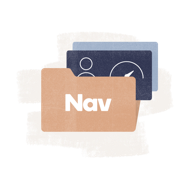These tricks can spell big trouble for your small business.
Well, we’re nearing the end of October and all across the country, pumpkins are being carved and candy is flying off store shelves. That can only mean one thing: It’s time to celebrate National Cybersecurity Awareness Month!
I know, it’s sad that we have a month dedicated to this, but cybercrime has become so prevalent that you can’t afford not take action—especially if you own a small business.
That’s because smaller companies are particularly vulnerable to attacks. A main reason being, many owners believe they don’t have the time and money to invest in software programs or services to make systems more secure. And hackers know this.
The numbers are frightful
According to the National Small Business Association, 44%, of small businesses have been attacked. These companies had costs averaging $8,700. That may not sound like a ton of money, but keep in mind that costs can easily escalate into the hundreds of thousands depending on the type of attack.
So while big name victims like Home Depot, Target and Staples grab the headlines, it’s small businesses that need to be most vigilant.
As you budget for next year, make sure you consider investing money in systems to keep your business protected. Don’t worry, you don’t have to break the bank to do it.
How to defend your business
A recent USA Today article does an excellent job highlighting ways you can protect yourself, including:
- Hire computer security consultants to evaluate computers and websites and suggest ways to protect them.
- Buy insurance to cover financial losses. Premiums can be as low as $1,000 a year for $1 million in coverage.
- Install free antivirus and anti-malware software available online. Also add firewalls, which block attempts to access.
- Make sure email is secure by using an email provider that has proper security systems.
- Avoid having customers’ credit card information stolen by using a separate company to process orders. The company should guarantee that its systems are secure.
- Use a service that helps weed out fraudulent credit card transactions
Business credit monitoring can help too
I would also add business credit monitoring to this list. With it, you can set up real-time alerts to be notified if anything changes on your business credit reports. This will help you quickly catch new unauthorized credit accounts, high balances, and more—before the fraud escalates. Learn more.
Internet-based phones under attack
This is a scam you’ll definitely want to watch out for. Internet-based phone hacking is a new spin on an old trick, and the web makes it even easier and profitable for thieves. It’s a swindle that mainly affects small businesses, costing victims $4.73 billion globally last year. The fraud works this way:
Hackers sign up to lease premium-rate phone numbers from one of dozens of web-based services that charge dialers over $1 a minute and give the lessee a cut. The payout to the lessees can be as high as 24 cents for every minute spent on the phone.
Hackers then break into a business’s phone system and make calls through it to their premium number, typically over a weekend, when nobody is there to notice. With high-speed computers, they can make hundreds of calls simultaneously, forwarding as many as 220 minutes’ worth of phone calls a minute to the pay line. The hacker gets a cut of the charges, typically delivered through a Western Union, MoneyGram or wire transfer.
To avoid the same fate, telecom experts advise people to turn off call forwarding and set up strong passwords for their voice mail systems and for placing international calls. You should always treat your phones as Internet-connected machines, since criminals already were doing that.
Read more about internet-based phone hacking in this New York Times article.
This article was originally written on October 28, 2014 and updated on November 3, 2016.



Have at it! We'd love to hear from you and encourage a lively discussion among our users. Please help us keep our site clean and protect yourself. Refrain from posting overtly promotional content, and avoid disclosing personal information such as bank account or phone numbers.
Reviews Disclosure: The responses below are not provided or commissioned by the credit card, financing and service companies that appear on this site. Responses have not been reviewed, approved or otherwise endorsed by the credit card, financing and service companies and it is not their responsibility to ensure all posts and/or questions are answered.